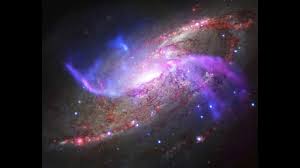The finding will aid astronomers in their understanding of the variables governing the evolution of dying radio galaxies and in determining how much energy these fading sources replenish in their host galaxies and the intergalactic medium.
Pune: Using some of the most potent radio telescopes in the world, including the Giant Metrewave Radio Telescope (GMRT) in Khodad, Pune, a team of astronomers from the National Centre of Radio Astrophysics (NCRA), Tata Institute of Fundamental Research (TIFR), Physical Research Laboratory (PRL), Ahmedabad, and University of Oxford has discovered several “elusive dying radio galaxies.”
The finding will assist astronomers in understanding the parameters that control the evolution of dying radio galaxies and in estimating the energy that these sources contribute to their host galaxies and the intergalactic medium. The study emphasises the value of merging data from huge radio telescopes that operate in many frequency ranges. According to the researchers, their study will also act as a testing ground for research done in the future using the Square Kilometre Array (SKA) telescope, the largest radio interferometric array telescope that will be constructed by an international partnership that includes India.
Wadadekar stated, “Researchers employed deep multi-frequency radio surveys carried out with the GMRT in India, the low frequency array (LOFAR) telescope in the Netherlands, and the very large array (VLA) in the United States to detect fading radio galaxies. They were able to recognise almost two dozen radio galaxies that displayed relic emission from lobes without AGN activity by examining the pictures and spectra of a large number of radio galaxies. The XMM-Newton Large Scale Structure (XMM-LSS) extragalactic field searched a 12-square-degree area of the sky for these fading galaxies.
Contrary to earlier studies, sensitive observations allowed researchers to uncover a far larger density of leftover sources than anticipated. They were able to locate host galaxies and large-scale environments where residual sources are found thanks to the 8.5m Subaru telescope’s extensive optical survey, Wadadekar added.





